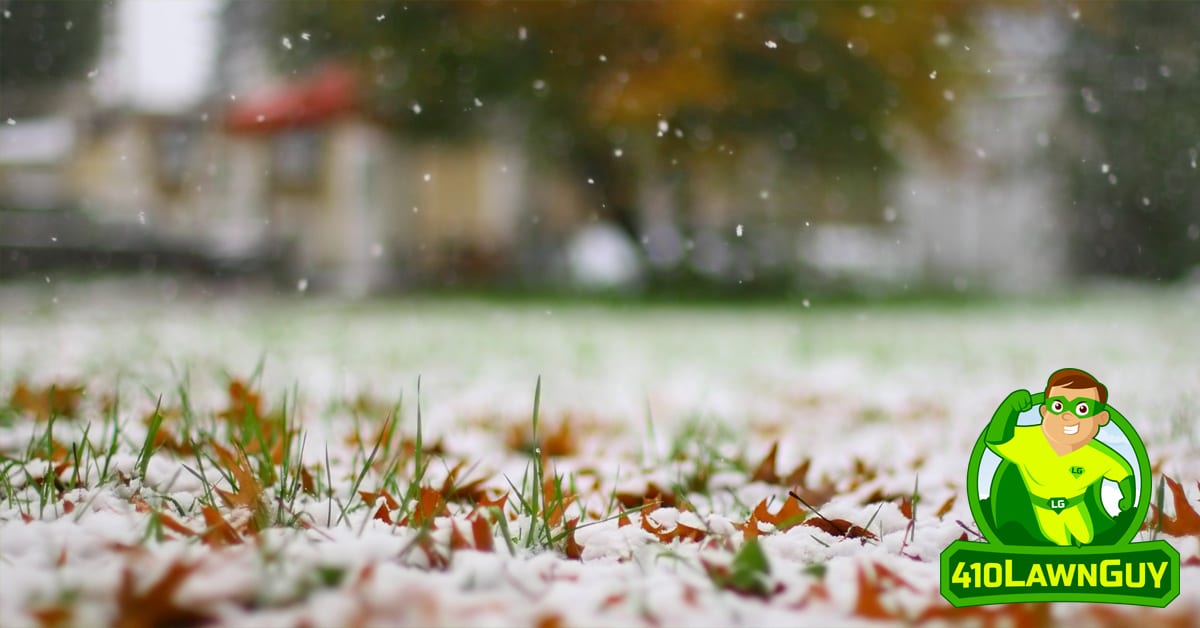
We know you won’t be outside mowing the lawn and tending your garden over the winter. But, that doesn’t mean you should ignore your yard until the warm weather returns. You don’t want your lawn looking like a brown, dry, lifeless mess when the seasons change. There are a few things you can do with your lawn in winter to get a jumpstart on spring.
Aerate Your Lawn In Winter
Over time, the soil in your yard can get compacted, especially in high-traffic areas. This can limit the number of nutrients your grass can absorb and prevent the ground from draining properly.
One way to improve drainage and ensure your grass is getting the nutrients it needs to stay healthy is to aerate your lawn in winter. You can do this with a power aerator if you have a large yard. This machine will puncture the earth, allowing air to flow and water to get down into the soil. If your yard is on the smaller side, you can also do this by hand using a pitchfork.
If your lawn could benefit from aeration, be sure to get it done before the first frost.
Fertilize
Fertilizing is another way to treat your lawn before the first frost of the year. Adding fertilizer after aerating the lawn will provide much-needed nutrients to your grass, helping it come back to life fast once the weather changes.
It’s best to choose a cold-weather, slow-release fertilizer. Follow the directions on proper distribution and watering for the best results.
Seed Your Lawn in Winter
Bare spots can be a real eyesore in an otherwise healthy lawn. You can get a head start on seeding by putting it down now rather than wait for spring. Check that you’re getting a seed meant for colder climates so it can survive the winter. And, choose a mild day so you can water the seed.
Rake the Leaves
By now, the leaves have all fallen from the trees, straight into your yard. If you haven’t gotten to raking leaves yet, it’s best to get it done before the weather becomes too bitter to be outside.
Fallen leaves, especially wet leaves, can cause water buildup and fungal growth in your grass and flower beds. You could even find bare spots in these areas when the ground thaws, creating more work to refresh your lawn in the spring.
Beware of Salt
One thing you want to avoid getting on your lawn in the winter is salt. De-icing products are a great way to keep your sidewalks and driveways free of ice and snow, but it can leach into the nearby grass. This can create bare spots and limit nutrient uptake.
If you can’t avoid salting near your lawn, consider getting an alternative to sodium chloride that is grass-friendly.
Be Smart with Snow
Keep your snow piles away from your lawn to prevent it from getting damaged. Even if you didn’t salt your walkways, road salt could get mixed in with the snow in your yard, which can cause damage once it melts and seeps into your grass.
Snow piles can also compact the soil, causing issues with aeration and drainage. Snow mold could also become a factor, creating a fungal infection that can kill your lawn and garden. Instead, spread out your shoveled snow to help it melt faster and reduce the impact on your soil and lawn.
Have Us Do the Work for You
If you’re not ready to get outside and take care of your lawn this winter, the 410 Lawn Guy can do it for you. Call us at 410-LAWNGUY (410-529-6429) or fill out our contact form today to get a free estimate on recommendations for your winter lawn care. We’ll come out to take care of it while you stay warm in your house, ready to check off your to-do list.

